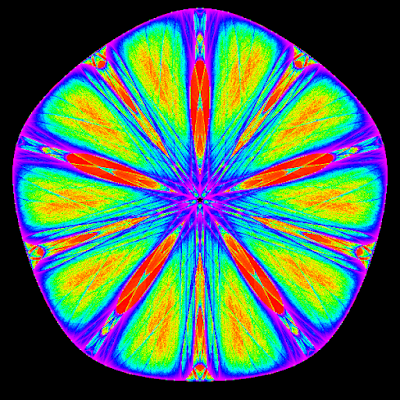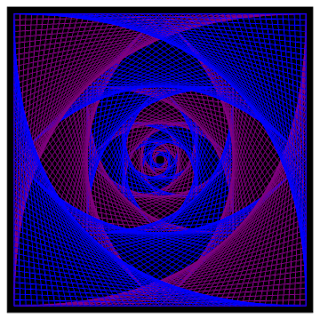Symmetry in Chaos

Introduction At first glance, symmetry and chaos would seem to have little to do with each other. Symmetry is order, harmony; while chaos is, well, chaos. But it turns out, the two have a deep connection underneath. Chaos can be harnessed and put in the frame of symmetry to create rich forms, where chaos gives it the pattern, and symmetry gives it the shape. These themes are explored in the beautiful book Symmetry in Chaos by Michael Field and Martin Golubitsky, which inspired this post. How it's made The idea behind it is elegantly simple. You take some initial point on the complex plane, and iterate some function on it. (If you are new to these kinda things, iterating means taking a point, applying a function on it to get a new point, applying the function on the new point to get yet another point, and on and on.) The authors suggest the following function with the desired properties of symmetry and chaos: f z = λ + α ...

